by Eric Meier
When attempting to identify a wood sample, it’s important to keep in mind the limitations and obstacles that are present in our task. Before starting, please have a look at The Truth Behind Wood Identification to approach the task in a proper mindset; I consider the linked article to be required reading for all those visiting my site with the intent of identifying wood.
1. Confirm it is actually solid wood.
Before proceeding too much farther into the remaining steps, it’s first necessary to confirm that the material in question is actually a solid piece of wood, and not a man-made composite or piece of plastic made to imitate wood.
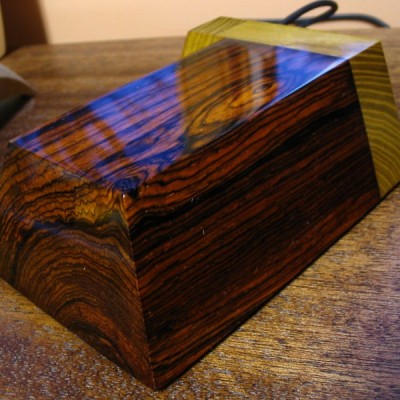
Can you see the end-grain?
Manufactured wood such as MDF, OSB, and particleboard all have a distinct look that is—in nearly all cases—easily distinguishable from the endgrain of real wood. Look for growth rings—formed by the yearly growth of a tree—which will be a dead-giveaway that the wood sample in question is a solid, genuine chunk of wood taken from a tree.
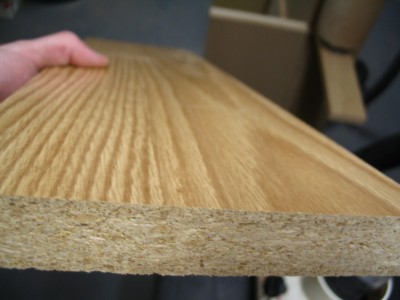
Is it veneered?
If you see a large panel that has a repeating grain pattern, it may be a veneer. In such cases, a very thin layer of real wood is peeled from a tree and attached to a substrate; sometimes the veneer can be one continuous repeating piece because it is rotary-sliced to shave off the veneer layer as the tree trunk is spun by machines. Assuming it is a real wood veneer with a distinct grain and texture—and not merely a piece of printed plastic—you may still be able to identify the outer veneer wood in question, but you should still realize that is it only a veneer and not a solid piece of wood.
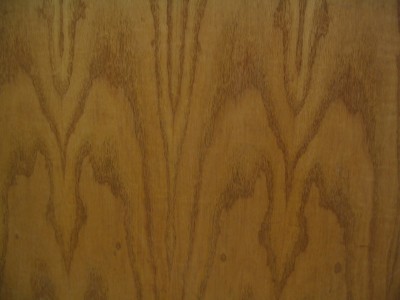
Is it painted or printed to look like wood?
Many times, especially on medium to large-sized flat panels for furniture, a piece of particleboard or MDF is either laminated with a piece of wood-colored plastic, or simply painted to look like wood grain. Many of today’s interior hardwood flooring planks are good examples of these pseudo-wood products: they are essentially a man-made material made of sawdust, glues, resins, and durable plastics.
2. Look at the color.
Some questions to immediately ask yourself:
Is the color of the wood natural, or is it stained?
If there is even a chance that the color isn’t natural, the odds are increased that the entire effort of identifying the wood will be in vain.
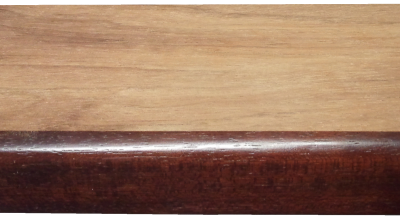
Is it weathered or have a patina?
Many woods, when left outside in the elements, tend to turn a bland gray color. Also, even interior wood also takes on a patina as it ages: some woods get darker, or redder, and some even get lighter or lose their color; but for the most part, wood tends to darken with age.
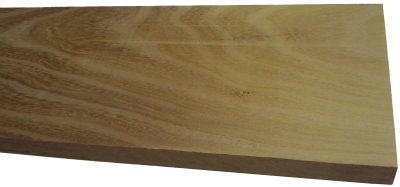
Is it possible to sand or plane the board to see the natural raw color of the wood?
The most predictable baseline to use when identifying wood is in a freshly sanded state. This eliminates the chances of a stain or natural aging skewing the color diagnosis of the wood.
3. Observe the wood grain.
If the wood is unfinished, then look at the texture of the grain. Ask yourself these questions:
Does the wood have an open, porous texture?
Most softwoods will be almost perfectly smooth with no grain indentations, while many common hardwoods have an open pore structure, such as oak or mahogany; though there are some hardwoods that are also smooth to the touch, such as maple.
Can you tell if the wood is quartersawn or plainsawn?
By observing the grain patterns, many times you can tell how the board was cut from the tree. Some wood species have dramatically different grain patterns from plainsawn to quartersawn surfaces. For instance, on their quartersawn surfaces, lacewood has large lace patterns, oak has flecks, and maple has the characteristic “butcher block” appearance.
Is there any figure or unusual characteristics, such as sapwood, curly or wild grain, burl/knots, etc.?
Some species of wood have figure that is much more common than in other species: for example, curly figure is fairly common in soft maple, and the curls are usually well-pronounced and close together. Yet when birch or cherry has a curly grain, it is more often much less pronounced, and the curls are spaced farther apart.
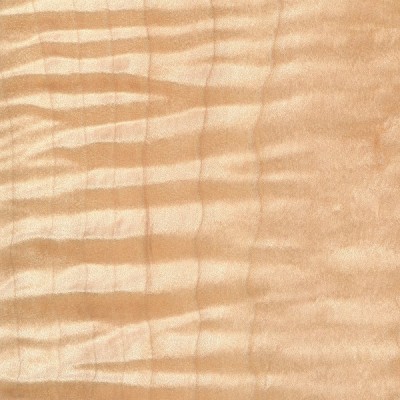
4. Consider the weight and hardness of the wood.
If it’s possible, pick the piece of wood up and get a sense of its weight, and compare it to other known wood species. Try gouging the edge with your fingernail to get a sense of its hardness. If you have a scale, you can take measurements of the length, width, and thickness of the wood, and combine them to find the density of the wood. This can be helpful to compare to other density readings found in the database. When examining the wood in question, compare it to other known wood species, and ask yourself these questions:
Is the wood dry?
Wood from freshly felled trees, or wood that has been stored in an extremely humid environment will have very high moisture contents. In some freshly sawn pieces, moisture could account for over half of the wood’s total weight! Likewise, wood that has been stored in extremely dry conditions of less than 25% relative humidity will most likely feel lighter than average.
How does the wood’s weight compare to other species?
Taking into account the size of the board, how does its weight compare to other benchmark woods? Is it heavier than oak? Is it lighter than pine? Look at the weight numbers for a few wood species that are close to yours, and get a ballpark estimate of its weight.
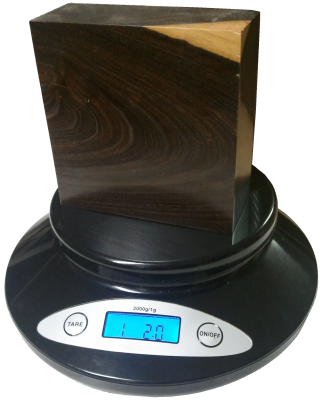
How hard is the wood?
Obviously softwoods will tend to be softer than hardwoods, but try to get a sense of how it compares to other known woods. Density and hardness are closely related, so if the wood is heavy, it will most likely be hard too. If the wood is a part of a finished item that you can’t adequately weigh, you might be able to test the hardness by gouging it in an inconspicuous area. Also, if it is used in a piece of furniture, such as a tabletop, a general idea of its hardness can be assessed by the number and depth of the gouges/dings in the piece given its age and use. A tabletop made of pine will have much deeper dents than a tabletop made of Oak. Additionally, you can always try the “fingernail test” as a rough hardness indicator: find a crisp edge of the wood, and with your fingernail try to push in as hard as you can and see if you’re able to make a dent in the wood.
5. Consider its history.
Many times we forget common sense and logic when attempting to identify wood. If you’ve got a piece of Amish furniture from Pennsylvania, chances are more likely that the wood will be made of something like black walnut or cherry, and not African wenge or jatoba. You might call it “wood profiling,” but sometimes it can pay to be a little prejudiced when it comes to wood identification. Some common-sense questions to ask yourself when trying to identify a piece of wood:
Where did it come from?
Knowing as much as you can about the source of the wood—even the smallest details—can be helpful. If the wood came from a wood pile or a lumber mill where all the pieces were from trees processed locally, then the potential species are immediately limited. If the wood came from a builder of antique furniture, or a boat-builder, or a trim carpenter: each of these occupations will tend to use certain species of woods much more often than others, making a logical guess much simpler.
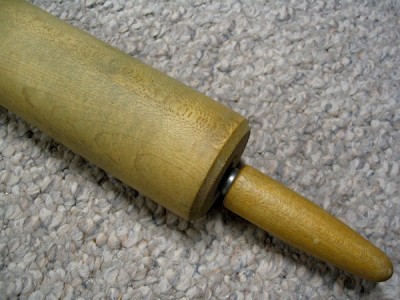
How old is it?
As with the wood’s source, its age will also help in identification purposes. Not only will it help to determine if the wood should have developed a natural patina, but it will also suggest certain species which were more prevalent at different times in history. For instance, many acoustic guitars made before the 1990s have featured Brazilian rosewood backs/sides, yet due to CITES restrictions placed upon that species, East Indian rosewood became a much more common species on newer guitars. (And this is a continuing shift as newer replacements are sought for rosewoods altogether.)
How large is the piece of wood?
Some species of trees are typically very small—some are even considered shrubs—while others get quite large. For instance, if you see a large panel or section of wood that’s entirely black, chances are it’s either painted, dyed, or stained: Gaboon ebony and related species are typically very small and very expensive.
What is the wood’s intended use?
Simply knowing what the wood was intended for—when considered in conjunction with where it came from and how old it is—can give you many clues to help identify it. In some applications, certain wood species are used much more frequently than others, so that you can make an educated guess as to the species of the wood based upon the application where it was used. For instance, in the United States: many older houses with solid hardwood floors have commonly used either red oak or hard maple; many antique furniture pieces have featured quartersawn white oak; many violins have spruce tops; many closet items used aromatic red cedar, and so forth. While it’s not a 100% guarantee, “profiling” the wood in question will help reduce the number of possible suspects, and aid in deducing the correct species.
6. Find the X-Factor.
Sometimes, after all the normal characteristics of a sample have been considered, the identity of the wood in question is still not apparent. In these instances—particularly in situations where a sample has been narrowed down to only a few possible remaining choices—it’s sometimes helpful to bring in specialized tests and other narrower means of identification.
The following techniques and recommendations don’t necessarily have a wide application in initially sorting out wood species and eliminating large swaths of wood species, but will most likely be of use only as a final step in special identification circumstances.
Odor
Believe it or not, freshly machined wood can have a very identifiable scent. When your eyes and hands can’t quite get a definitive answer, sometimes your nose can. Assuming there is no stain, finish, or preservative on or in the wood, quickly sand, saw, or otherwise machine a section of the wood in question, and take a whiff of the aroma.
Although new scents can be very difficult to express in words, many times the scent of an unknown wood may be similar to other known scents. For instance, rosewoods (Dalbergia spp.) are so named for their characteristic odor that is reminiscent of roses. Although difficult to directly communicate, with enough firsthand experience scents can become a memorable and powerful means of wood identification.
Fluorescence
While certain woods can appear basically identical to one another under normal lighting conditions, when exposed to certain wavelengths—such as those found in blacklights—the wood will absorb and emit light in a different (visible) wavelength. This phenomenon is known as fluorescence, and certain woods can be distinguished by the presence or absence of their fluorescent qualities. See the article Fluorescence: A Secret Weapon in Wood Identification for more information.
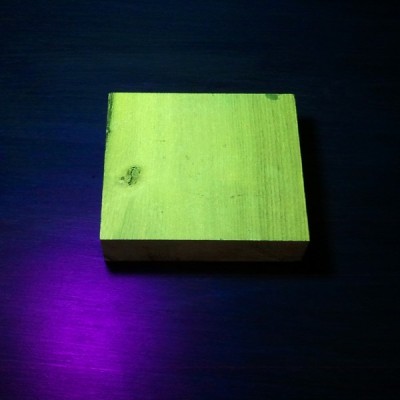
Chemical Testing
There are only a small number of chemical tests regularly used on wood, most of which are very specialized and were developed to help distinguish easily confused species with one another. They work by detecting differences in the composition of heartwood extractives. A chemical substance (called a reagent) is usually dissolved in water and applied to the wood surface: the surface is then observed for any type of chemical reaction (and accompanying color change) that may occur. Two of the most useful are the tests that are meant to separate Red and White Oak, and Red and Hard Maple.
Heartwood Extractives Leachability
Sometimes a wood species will have heartwood extractives that will be readily leachable in water and capable of conspicuously tinting a solution of water a specific color. For instance, the heartwood extractives contained in osage orange (Maclura pomifera) contain a yellowish-brown dye that is soluble in water. (This can sometimes be observed anecdotally when the wood is glued with a water-based adhesive: the glue’s squeeze-out is an unusually vibrant yellow.)
In a simple water extract color test, wood shavings are mixed with water in a vial, test tube, or other suitably small container, and the color of the water is observed after a few minutes. If the heartwood extractives are leachable by water, then a corresponding color change should quickly occur.
In addition to osage orange (Maclura pomifera), merbau (Intsia spp.), and rengas (Gluta spp. and Melanorrhoea spp.) are also noted for their readily leachable heartwood extractives. Because this property is quite uncommon, it can serve to quickly differentiate these woods from other lookalikes.
7. Look at the endgrain.
Perhaps no other technique for accurate identification of wood is as helpful and conclusive as the magnified examination of the endgrain. Frequently, it brings the identification process from a mostly intuitive, unscientific process into a predictable, repeatable, and reliable procedure.
Looking at the endgrain with a magnifier shouldn’t be a mystifying or esoteric art. In many cases, it’s nearly as simple as examining small newsprint under a magnifying glass. There are three components necessary to reap the full benefits contained in the endgrain:
I. A prepared surface.
When working with wood in most capacities, it becomes quickly apparent that endgrain surfaces are not nearly as cooperative or as easily worked as face grain surfaces. However, in this case, it is absolutely critical that a clear and refined endgrain surface is obtained.
For a quick glance of a softwood sample, a very sharp knife or razor blade can be used to take a fresh slice from the endgrain. However, in many denser species, especially in tropical hardwoods, one of the best ways to obtain a clear endgrain view is through diligent sanding. It’s usually best to begin with a relatively smooth saw cut (as from a fine-toothed miter saw blade) and proceed through the grits, starting at around 100, and working up to at least 220 or 320 grit, preferably higher for the cleanest view.
II. The right magnifier.
It need not be expensive, but whatever tool is used to view the endgrain should have adequate magnifying power. In most instances, 10x magnification is ideal, however, anything within the range of 8 to 15x magnification should be suitable for endgrain viewing. (Standard magnifying glasses are typically in the range of 2 to 4x magnification.)
These stronger magnifiers, sometimes called loupes, usually have a smaller viewing area than standard magnifying glasses. Fancier models—with built in lights, or larger viewing surfaces—are available at a premium; but the most basic models are usually only a few dollars.
III. A trained eye.
The third element that constitutes a proper endgrain examination is simply knowing what to look for. In analyzing the patterns, colors, shapes, and spacing of the various anatomical features, there is a veritable storehouse of information within the endgrain—all waiting to be unlocked. Yet, if these elements have not been pointed out and learned, the array of features will simply seem like an unintelligible jumble. The discipline of recognizing anatomical endgrain features is not easily summed up in a few sentences or even a few paragraphs, but it is nonetheless critical to the identification process. To this end, an in-depth look should be given to the various categories, divisions, and elements that constitute endgrain wood identification on the macroscopic level. (In this regard, macroscopic denotes what can be seen with a low-powered, 10x hand lens—without the aid of a microscope—rather than simply what can be seen with the naked eye.) Because the anatomy between softwoods and hardwoods is so divergent, each will be considered and examined separately:Still stumped?
If you have a mysterious piece of wood that you’d like identified, you’ve got a few options for next steps:USDA’s Forest Products Laboratory
You can mail your physical wood samples to the Center for Wood Anatomy Research.
Pros:
- Free
- Professional wood identification
Cons:
- Only available to US citizens
- Slow turnaround times (up to a month or more)
- Limited to three IDs per year
See their Wood ID Factsheet for more info.
Alden Identification Service
You can mail your physical wood samples (even small sections taken from antiques) to Alden Identification Service.
Pros:
- Professional wood identification
- Faster turnaround times (ranging from a few days to a week or two)
Cons:
- Paid service
See their ordering page for more info. (Note that Harry Alden has written several books while at USDA, including both Hardwoods and Softwoods of North America.)
Ask for help online
If the wood ID is merely a curiosity, or non-critical, you can post pictures of the wood in question.
Pros:
- Free
- No need to send physical samples
Cons:
- Greatly limited by the quality of the pictures provided
- Extra work usually required to get adequate clarity in photos
See article of Common US Hardwoods to help find the most commonly used woods.
Get the hard copy
 If you’re interested in getting all that makes The Wood Database unique distilled into a single, real-world resource, there’s the book that’s based on the website—the Amazon.com best-seller, WOOD! Identifying and Using Hundreds of Woods Worldwide. It contains many of the most popular articles found on this website, as well as hundreds of wood profiles—laid out with the same clarity and convenience of the website—packaged in a shop-friendly hardcover book.
If you’re interested in getting all that makes The Wood Database unique distilled into a single, real-world resource, there’s the book that’s based on the website—the Amazon.com best-seller, WOOD! Identifying and Using Hundreds of Woods Worldwide. It contains many of the most popular articles found on this website, as well as hundreds of wood profiles—laid out with the same clarity and convenience of the website—packaged in a shop-friendly hardcover book. 





Why I will no longer be replying to every wood ID request I’ve replied to literally thousands of wood ID requests on this site over the past 13+ years, but as the site’s popularity has grown, so has the time demands for ID on a daily basis. (Contrary to what some may seem to think, I am not some all-knowing wood wizard that can instantly ID your wood. It can actually take me a long time to sift through a lot of different resources.) Over the past few years, my backlog of pending wood species to be added to the… Read more »
I recently bought this table from a thrift shop and I’m hoping someone can help me identify the wood. The table is very large (58×36) and extremely heavy (took 3 very strong men to lift and carry it to my truck). It has a dark stain on it, but I sanded the underside of the drawer to remove the majority of the stain. Any help or advice would be very much appreciated.
I’m not sure, it doesn’t look like anything domestic in North America. Possibly an imported piece from Asia? Sorry I can’t be of more help.
At least that gives me somewhere to start. Now that you mention Asia, it does have sort of an Asian feel to it. Here’s a closer pic of the wood with the stain. Thank you for your help!
Hi Toni, we have a table of similar size, weight and colour. It was purchased about 22 years ago as part of a dining suite and was extremely popular at the time. Side tables pop up in thrift shops here too. The wood is very heavy heavy and dense which means it wears very well and survived four grandchildren. I recently resurfaced two side tables in a similar style to remove water marks and they responded very well with sanding and a Semi Matt varnish and polish. Almost certainly Asian and possibly Philippines. Cut and sold in large quantities to… Read more »
Toni.
Following on from last post I think Acacia Koa is worth investigating. Endemic to Hawaii.
Would anyone be able to help me identify the woods here that make up the interior of my house (built in the mid 1960s Southern California). I am trying to find information on how best to maintain and clean it also. Thank you.
Photo from an English farmhouse chair (possibly) mid 18century. Front rail of the seat needs repair with same wood. Possibly elm (difficult to find) or yew? Looks as though the whole chair is of one type. Many thanks
Definitely a ring porous hardwood, so yew is out. It’s hard to tell because the stain has appeared to obscure the latewood pores, which would help with ID. But I do see a little bit of ray fleck on the quartersawn surfaces, which would suggest oak.
Thank you so much, Eric.
Please help me identify what kind of wood this is…? Would it be tragic if it was white washed or white stained? Having trouble posting this… sorry if there are multiples.
Looks like an oak veneer door, so not even the more premium raised panel solid oak doors. As much as I’m a fan of keeping wood natural, this seems like it’d be a good candidate to paint as there’s basically no joints to crack in the paint as the doors are more or less just a solid piece of material.
Thank you so much for your help!
Hi I’m a woodworker in London I recently got a ton of old railroad sleepers expecting them to be oak but have no idea what they are the wood is old and stained by moisture but is is solid heavy and red in places
Any sugestions
That’s a pretty distinctive endgrain (the pores are in a unique dendritic pattern), I feel bad because I should know this one, but I’m at a loss for ID. Based on your location and the use as sleepers, I’m guessing it’s of African origin. It vaguely resembles some species of Eucalyptus, such as Jarrah, but that’s probably not what this is.
Ok thanks for the suggestions. It may be more obvious once I start turning. I was thinking something like sequoia because the rings had such a big diamiter. Must have been a huge trunk.
Recently inherited this buffet and table. Possibly made by my grandfather. Is it walnut?
Not walnut, it is quartersawn white oak
Thank you. It didn’t look the other oak I’ve seen and it’s a more chocolate brown so must be a walnut stain.
I found out they belonged to my grandpa’s second wife’s parents so are over 100 years old.
Yes, it’s very common for quartersawn white oak to be stained that color, especially in antiques.
One of my faves. As stated by Eric this is quartersawn white oak, Hard to tell in the tiny picture, it appears to be a veneer. I have a few pieces of quarter sawn oak from the late 1800s early 1900s . . . if solid quarter sawn oak, more than likely early 1900s and may be a highly collectible piece. My desk is made from reclaimed white oak (quarter sawn) solid planks gluded together. I had them use Jacobean stain so the tiger striping “pops” like crazy! Good luck with your buffet!
Korean jewelry box. Sometime in the 20th century ? 6.5 cm x 24.0 cm x 11.0 cm. In Korea they make furniture from Paulownia, Pinus and Zelkova. So maybe the box is made of one of them, but which ?
Greek krater model, 9 cm high, of turned wood, apparently from Rhodes, but what sort of wood ?
Hi I was wondering if you could help me identify this wood. This is from a small bookshelf that I am refinishing it appears to be very old from the finish and smell a came out of a storage unit so I have no idea of the origin. The top piece I am showing you is what was under the veneer that I took off. I know that the top and the shelves are piece together a but still curious as to the type of wood. For some reason it’s not letting me attach the pictures. Is it possible to… Read more »
Try to resize the pictures so they’re under 2MB and attach, that’s the most common hangup — file size too large.
This is an old secretary/dresser from Michigan, dating to the 1890’s. Any guesses on the wood. It was stained a mahogany color. Fine grained and quite heavy.
Given the age of the piece, it may simply be genuine mahogany.
Well, wouldn’t that be something! It was in a horrible state when I bought it, covered in three layers of old paint and thoroughly abused. But, ‘We shall rebuild her’! Thank you for your opinion.
Purchased this home built in 1927 craftman. Floors are? Maybe stain color?
thank you!!!
Need a closer picture of the floors and the wood grain.
Closer photo of floor and grain
Looks to be natural color. Old growth softwood. If you are on the West Coast, it’s probably Douglas fir. Otherwise it could be southern yellow pine.
Eric, thanks!
Anyone know what type wood this is!
Can anyone tell me why this is? My first home and this is underneath all the carpet.
Could you please identify this wood of a guitar? Thanks.
Looks like oak
Hi guys, any idea what this is?
Cheers, Rowan
From a superficial standpoint, the grain and curl looks most reminiscent of mahogany to me.
I am hoping you can help me identify the wood species in the photos I attached. I recovered several posts from a barn in NW Ohio. All of the wood is full of big worm holes. It is extremely hard and heavy. I thought it might be wormy chestnut, but my local hardwood shop said the worm holes on chestnut are usually smaller. He said it may be black oak??
Thanks!
Josh
Looks like a species of white oak. https://www.wood-database.com/wood-articles/distinguishing-red-oak-from-white-oak/
Thank you Eric for your reply. Here is another picture. Does this pic further support that it is likely white oak?
Yes, it does. White oak
I just finished sanding down this piece of furniture that is pretty old and I am trying to determine the kind of wood it is.
Are you referring to the piece on the bottom in the picture? Can you post a closer picture of that specific piece’s grain?
Yes I was. Sorry I had just sanded it and the top is what is was before sanding.
Looks like a type of mahogany to me.
Eric, Could you help me identify what wood this is? It was crafted in Lenoir, NC and is about 70 years old. This photo shows the wood gain after the paint and varnish has been removed from a sideboard.
Initial impressions are that it looks like a diffuse porous hardwood like maple or birch. Would need to see a finely sanded closeup of the endgrain to increase level of confidence of exact ID.
Could you possibly identify this for me please, i have started to sand it
Can’t tell from the picture, sorry.
#3. Eric, a second shot of unfinished side of cabinet. Again, thanks for any help.
#2 Here is a shot of inside of cabinet, showing unfinished wood I am trying to match. Thank you for your help.
Looks like a softwood, I would look for another softwood with roughly matching grain pattern and knots and you should get pretty close. Contenders would be pine, spruce, or maybe fir.
Hello, Eric.I need to know what kind of wood this cabinet is made from, to replace the missing panels. I suspect northern pine heartwood, but some venders doubit it is. Cabinet is 30 years old.
Yes, the grain patterns and knots certainly suggest a softwood like pine. I would be more concerned with finding a few specific pieces of softwood with roughly similar grain spacing and knots, and maybe use a light colored stain to match as close as possible. Pine, fir, spruce could all be used.
This is a second photo of the same bowl, with a better view of the detailed grains. I absolutely love this wood. I would get more if I knew what I was looking for!
I found this piece of wood and have no idea what it is, I turned two small bowls from it. It was super dry and the shavings were like dust. I would really like to know what type of wood this is. Any thoughts ?
Hmm, looks interesting. Was there any noticeable smell? How does the weight compare to other known woods? It looks like a tropical hardwood “exotic” of some sort. Where did you find this piece?
I am unsure of were it came from, I think it has been in my craft supplies for years with a hopes to turn it into something. It was so dry it didn’t have any smell, it was a fine fluffy dust when I was turning it.
Can anyone help me identify this wood type?
ambrosia maple
Another view
I’m not sure what happened to your picture, but it’s pretty small. Is it possible to finely sand the endgrain and repost a bigger closeup picture?
Any clue what this is?
Second picture – as I could not seem to add it to first comment.
Hello – can you help me identify the wood type on my Burton bay window please. My dog is scratching it up trying to kill the post man. I want to get a piece of same type of wood to try to match the stain .
Nothing jumps out at me that resembles common flooring planks in the US. Where are you located?
Evansville Indiana – wood Burton window – house built in 1979
Please, can anyone tell me what kind of wood this is? I discovered it underneath some old tile.
The pattern itself looks a lot like rotary cut pine or douglas fir, but it’s very hard to tell from the picture. If that light glare I can just make out in the image is actually indentations along the growth rings, that would actually rule out a softwood and mean it’s a ring porous hardwood, possibly oak.
I’ve attached a close up picture, if that helps. The darker areas of the wood are deep red and some areas transition into dark brown. Thanks for your help, I really appreciate it!
Thanks, these pictures are better. Looking closer, I can see that the indentations from the previous pictures are actually resin canals versus pores. They’re so large and prevalent that it strongly points to the wood being a species of southern yellow pine. No other softwoods really have that dominant a feature of resin canals like hard pines. https://www.wood-database.com/wood-articles/softwood-anatomy/
Aha! Well, thanks again for your help and the resource. I will be sure to refer to it as I go forward.
I can’t seem to get the image to appear larger, but if you open it up hopefully you’ll be able to see the detail.
Can anyone tell me what kind of wood this might be? My house is a converted Quaker schoolhouse, built in 1803, however this wood is on the second floor- I found it underneath some very old and cracked bathroom tiles and I have been trying to work with it. It is extremely hard
same timber but side view part 4
same timber but a larger piece part 3
same piece but wet part 2
any ideas on what this timber could be? this is an offcut in its dry form part 1
It is an australian hardwood
would like to know what wood this is. I’m making an electric guitar and need to know what species it is
Can you get a picture of the endgrain? Also, what continent was the wood harvested from?
Hi Eric, can you help identify this lumber. It has been in a basement since the early 1990’s. Was cut in the US and may be native to AR as we know it was transported from AR to MO. Thank you.
Hi Please could you advise as to what type of hardwood this is. It looks like genuine mahogany but could be something totally different. I obtained the wood 43 years ago and even then it looked to have been stored for a long time as it was very dark in appearance and covered in dust. size 700mm long x 320/340mm wide x 52mm thick. It’s heavy 9.3kg
Hello,
I am trying to figure out what type of wood this is. Any help would be great!
How old are they? It looks like it could be walnut- when walnut is air-dried it can take in a reddish Hugh. Usually it’s a dark brown.
Hi Tyler, Would it be suitable for Door frame in RCC building ?
I don’t have any idea how old are they.
Got these at an auction- the piece on left has a M marked on it. I have no idea what they may be. They came in a lot of exotic woods.. any ideas? Thanks
Hello,
I am trying to figure out what type of wood this is. Any help would be great!
Could be oak
Looks like walnut..
Photo of hinge cutout showing raw wood
Photo of interior unfinished wood
Photo of exterior finished wood.
Hi Eric,
Thank you for all the time and effort you spend helping folks like me who have difficulty identifying wood types. I have a 19th century Scottish tall case clock that I need help identifying the wood used. It is fairly lightweight. I will include four photos showing the entire clock, outside finished section, interior unfinished section and place at the hinge where wood has been cut out. Any help you can give me is greatly appreciated.
Best Regards
Lou
Please look at the end grain and see if you are able to help identify this wood.
I’ve recently purchased some wood (I make knives of all types so diversity of wood is a must) and I came across a cord of this wood and I have no idea what it is. I think it’s a type of orange (not Osage as not orange at all) but I can’t use it until I can identify this wood as I can’t sell knives made with unknown wood as it does not look good on a sales label. Please can you help me identify this wood ? Any input from anyone is welcome. PLEASE NOTE: second picture of end… Read more »
Hi Eric. I’m very impressed by your website. Could you please help with confirming the identity of this timber? (End grain picture attached.) It’s density is 520kg/m³, and I think it might be horse chestnut. I’m in the UK.
End grain close-up
Face grain photo…